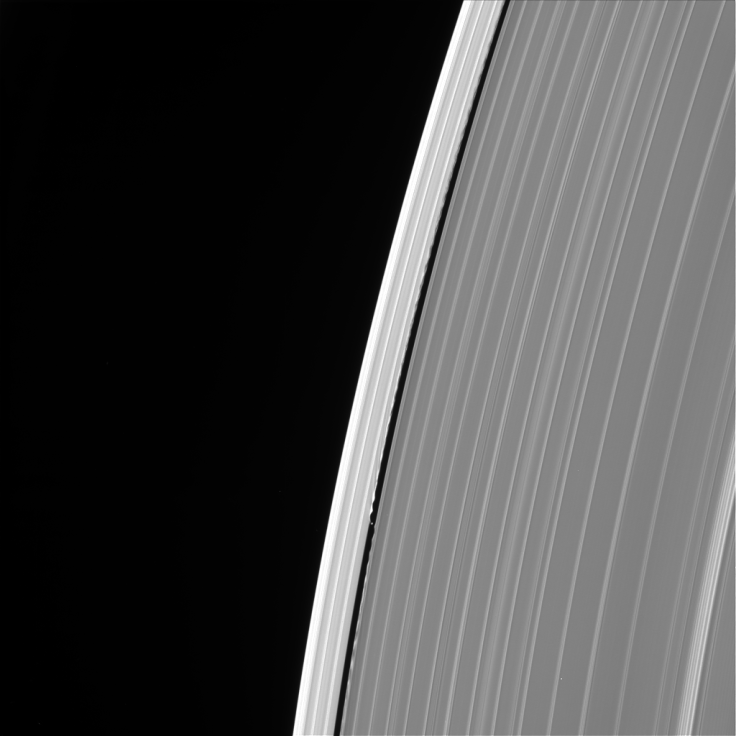NASA Image Shows Cassini Spacecraft’s View Right Before Death

The last thing NASA’s Cassini spacecraft saw as it was plunging into Saturn and burning up in the planet’s atmosphere was a breathtaking view of its rings and clouds.
Experts have processed the final image the spacecraft captured and sent back to Earth before its mission ended on Sept. 15, and are sharing the photo on the Cassini Imaging Central Laboratory for Operations website. At the same time the image was taken, on its path into the planet, Cassini was also collecting data from the atmosphere and transmitting as much of it back to Earth as possible before its signal got cut off.
The final photo, taken just hours before Cassini was lost forever, “looks toward the planet’s night side, lit by reflected light from the rings, and shows the location at which the spacecraft would enter the planet’s atmosphere hours later,” according to CICLOPS.
By the time Cassini was fully plunging into Saturn, this section had rotated into daylight.
The photo was snapped from almost 400,000 miles away from Saturn, a relatively close distance on the scale of the solar system.

Although the view of the rings and the top of Saturn’s atmosphere was the last photo Cassini sent back to Earth, it was part of a slate of stunning images it collected in its final days, on its Grand Finale. Another bunch, taken the day before, shows Saturn’s moon Enceladus dipping behind its host planet “in a farewell portrait,” CICLOPS reported. Cassini took a series of images over 40 minutes as the moon set and disappeared. It was 810,000 miles from Enceladus and 620,000 miles from Saturn when it took the sequence.
Enceladus is a point of interest for scientists and has been a focus of Cassini during its 13 years in that area of the solar system because it could potentially harbor alien life — or teach us more about what makes worlds habitable. One highlight of this investigation was the discovery of a plume coming off the moon’s southern hemisphere, a collection of water jets bursting out of Enceladus’ icy crust from its subsurface ocean. Cassini has found evidence in the plume of organic material and of a potential heat source within the moon.
During its final days roaming around Saturn and its moons, Cassini took one last glimpse of the plume as well.
Also among its final images were views of Titan, another intriguing moon of Saturn; and images of Saturn’s northern hemisphere and rings.
One particular closeup of the rings shows Daphnis, a tiny moon — called a moonlet — that barrels through Saturn’s rings in its orbit around the planet. Scientists only recently discovered and classified these moonlets, which clear ring material around them with their gravity, sometimes in the shape of a propeller.
Daphnis, which is 5 miles across, swings through a space in the rings called the Keeler Gap. The force of its gravity makes waves in the edges of the gap as it goes around.
© Copyright IBTimes 2025. All rights reserved.



















